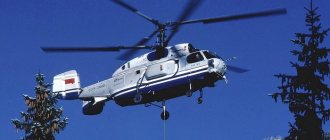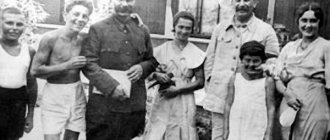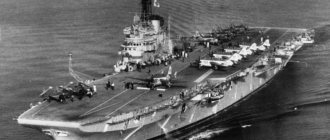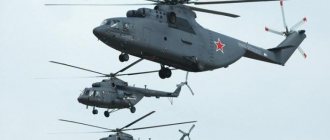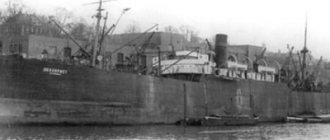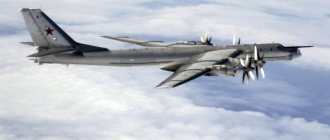New style of mobile operations
The first truly combat operation of the collective peacekeeping forces of the CSTO, successfully implemented in the conditions of the crisis in Kazakhstan, clearly demonstrated the extreme demand for such an operational-strategic association within the Russian Aerospace Forces as military transport aviation. An air force created by the Ministry of Defense of the Russian Federation of more than 70 Il-76 military transport aircraft and five An-124 quickly transported about 2.5 thousand peacekeepers in full equipment and with standard equipment from airfields in Russia, Belarus, Armenia, Tajikistan and Kyrgyzstan to two airfields in Kazakhstan.
As noted in Ukraine, the operation to transport the peacekeeping contingent to Kazakhstan proved that in a critical situation, the military air forces of the Russian Aerospace Forces can transfer a fully equipped airborne brigade to a remote theater of operations in one day.
mil.ru / Press service of the Russian Ministry of Defense
I would like to note that while redeploying peacekeepers to Kazakhstan, the Russian VTA simultaneously continued other air transportation in the interests of the Russian Defense Ministry, including flights to Syria. This refutes the statements of a number of foreign and domestic speakers that the “air bridge” organized by the RF Ministry of Defense to Kazakhstan required the use of almost all the aircraft of our military air force that are in flight condition.
The years 2015–2022 were the time when the Russian Armed Forces demonstrated a completely new style of conducting mobile operations - decisive and, dare I say it, lightning fast. Actions in Syria, Nagorno-Karabakh, and now Kazakhstan have become examples of how Russia can effectively stabilize a crisis situation and project its power over many thousands of kilometers. Which, of course, would be impossible if the RF Armed Forces did not have a powerful VTA.
Not only peacekeeping operations, but also military conflicts of recent years demonstrate that the key factor for success in them is the ability to deliver units of permanent readiness from their point of deployment to the deployment area as quickly and massively as possible. Military transport aviation, which previously was something of an instrument of emergency circumstances, in the 21st century has become the main instrument for the operational transfer of forces and assets. And this gives us reason to wonder whether everything is really so rosy with the state of the domestic BTA aircraft fleet?
Let's figure this out.
Ka-25 helicopter
This is one of the main anti-submarine combat units of domestic aviation. Russian military helicopters of the Ka-25 series are capable of detecting targets under water at a distance of up to 250 km. The device achieved such impressive results thanks to the new “Initiative” radar system of the “2K” and “Poplavok” models. In addition, the specialized equipment includes 2 frequency stations and a magnetometer. The development of these systems has been carried out over several decades. The helicopter's armament kit consists of 4 or 8 bomb launchers of the PLAB and OMAB series and 2 AT-1 torpedo launchers. The device is capable of reaching speeds of 220 km/h with a ceiling height of 3.5 km. This is a very heavy and massive helicopter (up to 7200 kg), but it is distinguished by its maneuverability and level of take-off speed. The kit includes 2 engines of 990 hp. With. The cabin can accommodate up to 8 soldiers.
"300 Spartans" and their problems
Despite the massive re-equipment of the RF Armed Forces and their transition to a new technical level, our military aviation is still dominated by aircraft developed and produced back in Soviet times. We are talking about such machines as the An-12, An-22, An-26, An-72, An-124 and various modifications of the Il-76.
Prt Scr youtube.com / Yuri Shumilin
Nominally, the Russian military transport aviation fleet numbers more than 300 aircraft. In fact, a significant number of these “300 Spartans” are either already in non-flying condition, or close to such status due to obsolescence, exhaustion of technical resources, lack of spare parts and similar reasons. For the most part, the machines “retiring” are An aircraft, whose design and production base remained on the territory of Ukraine after the collapse of the Soviet Union, and contact with which was finally lost after the events of 2014.
The light class Antonov was to be replaced by the light turboprop military transport aircraft Il-112V, developed in Russia. However, the accident on August 17, 2022 of the prototype 112 put the development of the machine and its launch into production on pause. The project to create a promising medium military transport aircraft, the Il-276, was closed. Because of this, the tasks of light and medium military transport vehicles increasingly have to be performed by the main workhorses of the Russian military aviation - the heavy Il-76. Roughly speaking, where it would be enough to send a “route taxi”, Russian military transport aviation has to drive a whole “truck”. This does not have the best effect on the cost of operating the BTA fleet and prematurely “kills” the service life of the 76s.
Meanwhile, many Il-76 aircraft in the BTA already require major repairs and modernization of key systems, including engines and avionics. Since the Ulyanovsk aircraft manufacturing enterprise Aviastar-SP JSC is busy with the production of the latest Il-76MD-90A, a good solution to the problem of the lack of capacity for overhaul and modernization of the 76 previous modifications may be to involve the Voronezh VASO, which stopped producing the An-148, but Il-112V production did not begin.
Mi-24 helicopter
This rotorcraft was called the “crocodile”. Russian Air Force helicopters of the Mi-24 series have repeatedly confirmed their ability to conduct round-the-clock combat. This device can not only parachute up to 10 people, it is very effective in air and ground attacks. The Mi-24PS model is an alternative to the original and is capable of performing search and rescue missions. Another representative of the series, the Mi-24РХР, has found wide application in radiochemical reconnaissance. It was these helicopters that made it possible to timely assess the level of danger during the liquidation of the disaster at the Chernobyl nuclear power plant.
The aircraft's arsenal includes suspended weapons (2 cannons, 2 machine guns and 2 grenade launchers), Sturm, Hermes and Ataka guided missiles. The package also contains cassettes with bombs up to 500 kg. The upgraded version has an air-to-air cannon weapon. The maximum speed limit is 330 km/h. The lift ceiling is 5 km. The total engine power is 4400 hp. With.
There is no replacement for Ruslan yet
In Russia, the question of creating a promising super-heavy military transport aircraft still remains open. It is important to understand that super-heavy military transport aircraft will always be in demand for transporting aviation, missile and heavy equipment. At the same time, the Il-76 has limitations in terms of range, payload capacity and dimensions of the transport cabin, and the highly successful An-124 Ruslan project found itself in limbo with the collapse of the USSR. The car did not receive its development in new modifications. The Ruslans produced in Soviet times are worn out in our BTAs, and there is no replacement for them yet. First of all, due to the lack in the Russian Federation of aircraft engines suitable for machines of this class.
wikipedia.org/Anton Bannikov/GFDL
We have repeatedly raised the issue of resuming production of Ruslans at domestic facilities. But it should be understood that the efforts to recreate the production of the An-124 in time and resources are actually equal to the labor costs to create a new machine. For this reason, it seems more rational to use the available resources not to “reanimate” the Ruslana project, but to create a new generation aircraft - the promising aviation complex of the Military Transport Aviation (PAK VTA). And here the question immediately arises: who will develop this machine? The traditional creator of heavy vehicles for military aviation in Russia is. However, since 1991, it has changed its “sign” more than once and is now going through difficult times, perhaps due to the lack of clear management and projects, as well as a lack of competencies.
Yuri Grudinin, who came to the post of general director of PJSC Il in April 2019, is now detained on charges of fraud.
It’s good that Il was able to master the improvement of the 76s to the Il-76MD-90A model, which, by the way, made its operational debut during the transfer of peacekeepers to Kazakhstan. But the IL-76MD-90A is, perhaps, the “ceiling” of the enterprise at the moment. To develop the PAK VTA project, most likely, it will be necessary to form a separate group consisting of the best designers of all the latest projects. That is, to implement the model tested during the creation of the Russian medium-haul narrow-body passenger aircraft MS-21.
Mi-8 helicopter
Initially, a unit of this series was designed as a multi-purpose military vehicle. However, the Russian Army's modernized helicopters (Mi-8MTV-2) have long served as a long-range strike force. Representatives of the series gained great popularity in the role of landing transport. Mi-8 is the most common helicopter in Russia. They were the main striking units in hot spots in Afghanistan, Chechnya, Algeria, Angola, Vietnam, Egypt, Iraq, Congo, Libya, Pakistan, Syria, Uganda and many other countries.
The development of Mi-8 helicopters began in the spring of 1960. The prototype of the series was the legendary piston Mi-4. For a long time the device did not find its proper place of application. However, in 1991, unexpectedly, a number of countries ordered a massive purchase of the Mi-8. About 3,000 units were exported. A few years later, the Mi-8 acquired a new modernized version of the MTV-2. Its configuration included 4 B8V20-A blocks with 20 automatic magazines each, 9 machine guns, 4 GSh-23L cannons and a suspension for mounting aerial bombs weighing up to 500 kg. The helicopter is capable of rising to a height of 4.5 km, reaching speeds of up to 250 km/h and withstanding a load of 4000 kg. Thanks to two 1500 hp engines. With. and a spacious interior, the vehicle can accommodate up to 28 paratroopers.
Comparison of strategic aviation
There is an opinion that the United States is superior to Russia in terms of strategic aviation. But it is wrong and here's why.
The US Air Force has 95 bombers (35 B-1B, 16 B-2A and 44 B-52N), but:
- The B-2 carries only free-fall bombs.
- B-52N is a technically outdated model.
- The B-1B cannot be called a carrier of nuclear weapons. In addition, our TU-160 has a take-off weight 1.5 times higher, and a combat radius 1.2 times higher.
The Russian Air Force has 139 aircraft - Tu-22MR, Tu-22M3, Tu-160, T-95MS. By 2025, Russia plans to replace the Tu-95 and Tu-160 with the new PAK-DA bomber.
Ka-29 helicopter
This model is a multi-purpose model with the possibility of upgrading to a shock version. Recently, such Russian helicopters have been designed purely for hitting targets on the ground and landing. They became widespread in China, Vietnam and India.
The Ka-29 arsenal includes an aiming system, up to 90 aircraft and anti-tank missiles, 2 or 3 cannon installations. It is possible to attach 4 heavy machine guns. The interior of the rotorcraft can accommodate up to 16 paratroopers or 6 stretchers with wounded. Load capacity – up to 4000 kg. Rated engine power is 4400 hp. With. The maximum speed that the Ka-29 helicopter can reach with an average load is 280 km/h. As for the ceiling height, it is 4.3 km.
RUSSIAN AIR FORCE. CURRENT STATE AS OF 01/01/2019. HELICOPTERS
— 126 Ka-52 Alligator attack helicopters. A total of 146 Ka-52 units have been ordered. According to other sources, a contract for the supply of 36 Ka-52s has been completed and a second one for 143 vehicles is underway. According to the plan, in 2022 the VKS received six new Ka-52s. As the Ministry of Defense of the Russian Federation announced on February 6, 2022, it plans to enter into a contract for the purchase of an additional 114 Ka-52 Alligator combat helicopters as part of the implementation of the new State Armament Program 2018–2027. Unfortunately, last year there was the first combat loss of the Ka-52. On the night of May 7, 2022, the Russian Aerospace Forces (VKS) lost a Ka-52 Alligator attack helicopter in Syria. According to the official version, the car could have crashed due to a technical problem; according to the unofficial version, it was shot down by radical Islamists using MANPADS during a scheduled flight. Both pilots were killed.
— 110 Mi-28 attack helicopters and 8 Mi-28 UB combat training helicopters. Several contracts for the supply of the Russian Air Force have been completed. In the near future, it is planned to deliver Mi-28NM and upgrade combat MI-28N to MI-28NM. The contract for the supply of 24 Mi-28UBs until 2019 is being fulfilled. 1At the end of 2022, the Russian Ministry of Defense entered into a state contract with the Russian Helicopters holding company for the production of an pilot batch of new Mi-28NM helicopters. According to the terms of the contract, the first two vehicles were manufactured before the end of 2018. The appearance of the Mi-28NM is significantly different from the basic version of the Mi-28N helicopter. First of all, the functionality of the combat vehicle has been improved by changing the ergonomics of the cockpit and installing a backup helicopter control system in the pilot-operator's cabin. The vehicle acquired a modified fuselage, modernized engines, an on-board electronic equipment complex and a sighting system, a new auxiliary power unit, communication equipment with unmanned aerial vehicles - 12 Ka-50 attack helicopters. Serial production ceased in January 2009, with only the Ka-52 remaining in production. Perhaps a certain amount is used to train pilots for the Ka-52. Not available in combat units. — more than 60 Mi-35M attack helicopters. In addition, 5 Mi-35M new built by Rostvertol JSC (part of Russian Helicopters JSC) in the 2nd joint aviation detachment of the Federal Security Service (FSB of Russia), a separate aviation group of which is based in the village of Kochubeevskoye (Stavropol Territory).
The helicopter was created at the MVZ Design Bureau named after. M.L. Mil through deep modernization of the Mi-24V/VP in order to improve flight technical and operational characteristics, increase the unification of Mi helicopters, as well as ensure round-the-clock execution of combat missions and more effective use of all types of weapons in various physical and geographical conditions, including including in high mountains and hot climates.
Last August, at the Army-2018 International Military-Technical Forum in Kubinka, Russian Helicopters JSC presented a modernized version of the Mi-35M combat helicopter. The main difference of the new version was the introduction into the helicopter's armament of the 9K121M Vikhr-M guided weapons complex with the 9-A-4172K Vikhr-1 missile with an automatic laser beam guidance system and a firing range of up to 10 thousand meters. Currently, Ka-52 combat helicopters are equipped with the Vikhr-M missile system.
The modernized Mi-35M helicopter is also equipped with a modified search and targeting system OPS-24N-1L, the basis of which is the gyro-stabilized 24-hour optical-electronic system GOES-321MK. The armament also included the Strelets missile system with 9M342 Igla-S air-to-air guided missiles.
The helicopter is equipped with the President-S35 airborne defense system. In addition, as additional equipment, the helicopter can be equipped with navigation and landing equipment VOR/ILS, VIM-95–35, as well as a VND-94 radio range finder for measuring the distance between the helicopter and ground-based radio beacons.
— 178–260 Mi-24D/V/VP/PN transport and combat helicopters. Another 30 Mi-24s are part of the Navy MA and 10 are part of the Russian National Guard troops.
Total: 539–581 attack helicopters.
— 350 multi-purpose transport Mi-8T/MT/MTV/AMT/AMTSh. Another 8 Mi-8, 4 Mi-8T, 4 Mi-8MT, 1 Mi-8AMTShVA as part of the Navy MA and 60 Mi-8 as part of the Russian National Guard troops and a certain number in the Border Service of the Federal Security Service of the Russian Federation.
— 41 heavy transport helicopter Mi-26. Construction continues. Another 10 Mi-26s are in the National Guard troops and a number are in the Border Service of the Federal Security Service of the Russian Federation.
Deliveries of newly built Mi-26 helicopters to the Russian Ministry of Defense were resumed after about a two-year break at the end of 2016, when Rostvertol delivered an “Arctic” helicopter, which became part of the 45th Air Force and Air Defense Army group of the Northern Fleet.
Previously, under a 2010 contract for 18 newly built Mi-26 helicopters, the Russian Ministry of Defense received 17 vehicles in 2011–2014 (the 18th helicopter under this contract was a helicopter with tail number “70 red” (34-04) in the “Arctic" execution, delivered in 2016).
In April 2016, the Russian Ministry of Defense signed a contract with Russian Helicopters JSC for two further Mi-26 helicopters, which were delivered in 2022.
Last August, factory flight tests of a prototype of the modernized heavy military transport helicopter Mi-26T2V, created in the interests of the Russian Ministry of Defense, began in Rostov-on-Don.
After the demonstration at Army 2018, the helicopter underwent a set of preliminary tests at the Moscow Helicopter Plant named after M.L. Mil" (MVZ), and then transferred for state tests at the 929th State Flight Test Center of the Ministry of Defense of the Russian Federation named after V.P. Chkalov in Akhtubinsk, Astrakhan region.
The new helicopter differs from the basic Mi-26 model by the modern integrated NPK90-2V avionics system, which greatly simplifies piloting the helicopter. The latest avionics system allows you to automatically fly along the route, reach a predetermined point, approach, as well as pre-landing maneuvering and return to the main or alternate airfield. In addition to this, the helicopter is equipped with a digital flight control system, and color liquid crystal multifunction indicators have appeared in the cockpit, significantly reducing the workload on the flight crew. In addition, the Mi-26T2V received a new on-board defense system “Vitebsk”, which not only detects the fact of a threat to the helicopter, but also counters attack weapons.
— 40 light multi-purpose Ka-226 helicopters, designed to transport 6 passengers or 1350 kg of cargo (including external sling). Another 8 Ka-226 (with Pratt & Whitney Сanada PW 207K engines) as part of the Russian Guard, transferred to it in April 2016 as part of the special purpose aviation units of the Russian Ministry of Internal Affairs (from 2007 to 2012, the Russian Ministry of Internal Affairs received 9 Ka-226 helicopters, one of these helicopters were lost in the accident). In 2022, the Federal Service of the National Guard Troops of the Russian Federation received 4 Ka-226T helicopters (equipped with Safran Arrius 2G1 turboshaft engines): one was supplied to the special-purpose aviation detachment of the Rosgvardiya department in the Krasnoyarsk Territory, and three more to the aviation detachment of the Russian Guard in Moscow. The Border Service of the Federal Security Service of the Russian Federation purchased 10 Ka-226TM helicopters for deployment on coast guard ships. It is known that 2 helicopters have already been delivered, and 2 more Ka-226 helicopters have been delivered to the FSB.
— 50 light ANSAT-U helicopters, with 10 more ordered in 2022. The helicopter is used by the Russian Aerospace Forces for pilot training. Under the first contract, KVZ supplied the Russian Air Force with 8 Ansat-U helicopters, including 6 in 2009, and 2 in 2010. Then, on March 1, 2011, the Ministry of Defense signed a contract with KVZ for the supply of 32 Ansat-U vehicles. The contractual cost of one Ansat-U helicopter under this contract was 127.72246 million rubles excluding VAT. Under this contract, five Ansat-U helicopters were delivered to the Russian Air Force (VKS) in 2011, six each in 2012, 2013, 2014 and 2015, and three in 2016.
Of the delivered Ansat-U helicopters, the first three helicopters built in 2009 are located at the army aviation training center in Torzhok, and the remaining 47 machines since 2010 have entered the training aviation group at the Sokol airfield (Saratov region) of the Syzran branch of the military educational and scientific center.
In July 2022, the Russian Ministry of Defense confirmed the conclusion of a contract with Russian Helicopters JSC for the supply of a pilot batch of the latest military Mi-38 helicopters, designated Mi-38T. November 23, 2022 Russian Helicopters JSC, test pilots of the Moscow Helicopter Plant named after. M.L. Mil of the Russian Helicopters holding company (part of the Rostec State Corporation), as part of the preliminary testing program, flew the first model of the Mi-38T helicopter, manufactured by the Kazan Helicopter Plant for the Russian Ministry of Defense.
By the end of 2022, the Ministry of Defense will receive two vehicles, with delivery in 2022 and 2022, respectively. The medium multi-purpose helicopter Mi-38 occupies a niche between the legendary Mi-8 and the heavy Mi-26 and can be used to transport cargo and passengers, including VIP, be used as a search and rescue helicopter and a flying hospital, as well as for flights over the water surface . Thanks to technical solutions, the Mi-38 surpasses other helicopters in its class in terms of payload, passenger capacity and many flight characteristics. It can operate in a wide range of climates, including marine, tropical and cold climates.
In September 2022, participants and guests of the Eastern Economic Forum in Vladivostok, Russian Helicopters PJSC, were presented with a flight sample of the newest multi-purpose Ka-62 helicopter, which made its first flight and landed on Russky Island in the city of Vladivostok. The first test flight of the Ka-62 took place in May 2022, and the second on February 15, 2022 in Arsenyev (Primorsky Territory). The Ka-62 is intended for delivering ammunition and weapons to the combat area, patrolling, conducting search and rescue operations, evacuating the wounded, training flight personnel, as well as for transporting and dropping paratroopers and aerial reconnaissance.
The design of a promising light helicopter (PLH) is underway, and Russian Helicopters JSC is working on a new generation of combat helicopter (CBV), ordered by the Russian Ministry of Defense in August 2017.
Each of the design bureaus - Mil and Kamov - is working on its own project. Kamov uses a coaxial design, which is a distinctive feature of the brand, while KB Mil prefers the classic design. The only thing common between the two projects is the large span of the horizontal tail, which is designed to relieve the load on the rotor at high speed. On existing Russian combat helicopters, small wings serve to suspend weapons on pylons. Their aerodynamic functions are secondary.
The only known characteristic of the helicopter is its speed, which must exceed 400 km/h. In August 2022, Deputy Minister of Defense of Russia Yuri Borisov recalled that the Ministry of Defense for a long time has been demanding that Russian Helicopters create a new concept for a combat helicopter platform, characterized by an increased cruising speed of approximately 400 km/h. Russia's combat helicopters have a maximum speed of 280 km/h (Mi-28N) and 300 km/h (Ka-52 and Mi-35M).
The prototype of the flying laboratory for the creation of the SBV was created on the basis of the modernized Mi-24 helicopter. It has a narrowed forward fuselage and only a single-seat cockpit. It is also equipped with new rotor blades. It made its first flight on December 29, 2015. The vehicles are tested without horizontal tail, with it, and also with extended wings. In the fall of 2016, LL SBV exceeded the speed of 405 km/h. Initially, the helicopter was developed as part of R&D under the PSV (advanced high-speed helicopter) program. The PSV program was stopped in 2014 due to the “inability to achieve operating cost reductions relative to achieved performance.” However, the flying laboratory began to be used for other programs. The new main rotor blades, which were tested at the LL PSV, will be used on new helicopters, as well as when modernizing existing types. In the case of the Mi-28 helicopter, the use of new blades increases the maximum speed by 10% and the cruising speed by 13%.
JSC Klimov, located in St. Petersburg, which is responsible for the propulsion system, is working on a new VK-2500M turboshaft engine. According to the company, the VK-2500M engine is completely new, and not a modification of the currently mass-produced VK-2500. The takeoff power of the new engine is 2600 hp, in emergency mode – 2950 hp. That is, the new engine is slightly more powerful than the VK-2500 (2400 hp in takeoff mode and 2700 hp in emergency mode). The new M modification will have 20% less weight and 16% fewer parts. Specific fuel consumption should also be reduced by 7%. The service life between repairs has been increased. The modular design also allows for field repairs. The VK-2500M engine should be certified in 2023, that is, simultaneously with the SBV helicopter. This engine will also be used on modernized versions of the Mi-28N and Ka-52 helicopters. Everything seems to be great, but there is one point... Having received such a large number of helicopters, the military began to reduce purchases, competitors are crowding out on foreign markets, and the air ambulance program ends in 2022. The most affected by the decline in export sales of Russian helicopters was PJSC Kazan Helicopter Plant. , which produced helicopters of the Mi-8/17 and Ansat family. Now the situation with military exports is not so rosy, since the times of its unbridled growth are long behind us. All large export orders for the Mi-8/17 have been completed, and orders from the Russian Ministry of Defense, the Ministry of Emergency Situations and Russian law enforcement agencies are relatively small and cannot compensate for export orders. In 2013, KVZ delivered 100 helicopters (94 Mi-8/17 and 6 "Ansat-U"), with 76 vehicles being transferred for export, and 24 to domestic customers. In 2014, the number of helicopters delivered to customers reached 107 (101 Mi-8/17 and 6 Ansat-U), 69 of which were exported, and 38 were transferred to Russian consumers. In contrast, in 2015 production was only 76 helicopters (according to some sources, the number of helicopters delivered reached 77), and in 2016 this figure dropped to 70 machines. According to available information, the company delivered 65 helicopters in 2022 and a similar figure (perhaps slightly higher) for 2018. Approximately half of 2022 deliveries were to Russian government customers. The Russian Aerospace Forces became the largest of them: (21 Mi-8MTV-5-1 helicopters plus 5 similar helicopters for conversion to the Mi-8MTPR-1 version) and 10 Ansat-U trainers. At the same time, large investments in the development and certification of two new generation helicopters - the 15-ton Mi-38 and the 3.6-ton Ansat - still need to be returned, since their sales are still low. Small-scale production of the Mi-38 is expected in the medium term, and the production of Ansat looks more promising from a business point of view, since in 2017-2019, taking into account orders from air ambulances and large companies, the production of 40 machines is expected.
Ka-52 Alligator attack helicopter of the 55th separate helicopter regiment in Korenovsk
Mi-28N attack helicopter
Prototype OP-1 of the modernized Mi-28NM combat helicopter (tail number “701 yellow”). Lyubertsy, December 2016 (c) Oleg Podkladov russianplanes.net
An upgraded Mi-35M combat helicopter with the Vikhr-M missile system at the exposition of the International Military-Technical Forum "Army-2018" (c) Said Aminov saidpvo.lj.com
Mi-8AMTSH-V helicopter (tail number “422 blue”) from the 562nd Army Aviation Base, now reorganized into the 337th separate helicopter regiment of the 14th Air Force and Air Defense Army of the Central Military District. Tolmachevo (Novosibirsk), November 2016 (c) Nikolay Enin wizarden.ru / wizarden.livejournal.com
A prototype of the modernized heavy military transport helicopter Mi-26T2V (tail numbers “3112” and “157”, serial number 34001212157, serial number 13–06, modernized machine built in 1988) during factory tests at JSC Rostvertol. Rostov-on-Don, August 2022 (c) Mi-26 aviaforum.ru
Helicopter Ka-226.80 (tail number “57 red”, serial number 5233951208104, serial number 0403) of the Russian Aerospace Forces on display at the MAKS-2015 air show. Zhukovsky, August 2015 (c) Spotter aviaforum.ru
Helicopters "Ansat-U" of the training aviation group of the Syzran branch of the military educational and scientific at the Sokol airfield (Saratov region) (c) Russian Ministry of Defense
Flying laboratory of a high-speed helicopter, converted from a Mi-24K helicopter at JSC Moscow Helicopter Plant named after M.L. Mile." 02.12.2015 (c) kabuki aviaforum.ru
The first prototype of the Mi-38T helicopter (tail number “38015”), built for the Russian Ministry of Defense at Kazan Helicopter Plant JSC (KVZ, part of Russian Helicopters JSC) on its first flight. In the foreground are three Ansat helicopters, including two newly built KVZ helicopters (registration numbers RA-21018 and RA-21021). Kazan, November 23, 2018 (c) Irina Erokhina / “Business Online” www.business-gazeta.ru
Roman Kuznetsov



